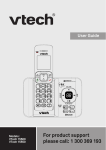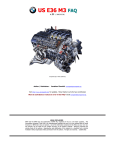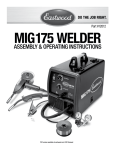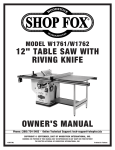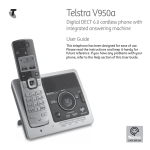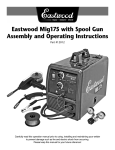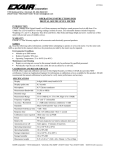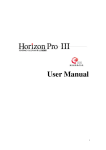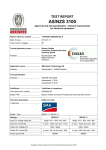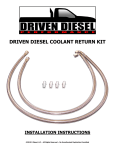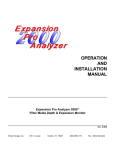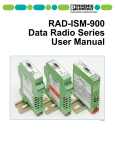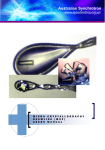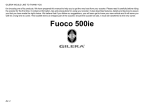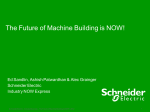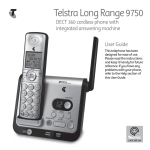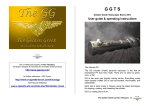Download HotCoat Powder Coating Gun
Transcript
® Patent #5,850,976 #6,003,779 263 Shoemaker Rd. Pottstown, PA 19464 1-800-345-1178 International: 610-323-2200 Fax: 610-323-6268 www.eastwood.com B R AN D ® Powder Coating System Part #10198 ! Award Winning 1999 Best New Product Automotive Restoration Market Organization Instruction Booklet Instruction Manual Part #10198Q • Rev. 1/06 © Copyright 2006 Easthill Group, Inc. 1998 PA Governor’s Award for Environmental Excellence DESCRIPTION OF PRODUCT Powder Coating provides a premium coating ideal for many automotive, marine, home, and garden applications. Eastwood’s HotCoat® Powder Coating System is a breakthrough refinishing system for the home hobbyist providing professional performance at a fraction of the cost of industrial equipment. The cured finish resists most chemicals, fuels, acids, thinners, brake fluid, UV light, and is much more durable than liquid coatings (up to ten times). Powder coating is environmentally friendly! It produces no toxic wastes and uses no solvents. The Eastwood HotCoat® PowderCoat System allows you to coat a part and return it to service in less than an hour! Now you can powder coat any metal part that can withstand the 400˚F (204˚C) cure temperature utilizing an electric oven or our Infrared Light Cure System. Want To Start Your Own Powder Coating Business? Log onto www.eastwood.com for a complete list of commercial powder coating equipment. HotCoat® LIMITED ONE YEAR WARRANTY APPLIES TO HotCoat® POWER SUPPLY ONLY The HotCoat® one year limited warranty applies only to the HotCoat® power supply. The HotCoat® power supply is warranted to be free from defects of workmanship and materials for the period of ONE YEAR from the original date of purchase. During this one year period, if the unit should malfunction or not operate, return the complete unit, freight prepaid, to the Eastwood Company. An R/A # must be obtained from Customer Service prior to return. Upon receipt, The Eastwood Company will inspect the power supply and, if the inspection reveals that the trouble is directly related to defective workmanship or material, the Eastwood Company, at its option, will repair or replace the power supply unit without charge. The remedy will consist of repair or replacement of the HotCoat® power supply only, at the company’s sole discretion. This warranty does not apply where: – it is apparent that others have made repairs, or the power unit has been opened, – the system has been abused or altered in any way, – the system has not been operated in accordance with the instructions. THE EASTWOOD COMPANY SHALL NOT BE LIABLE FOR ANY DAMAGE TO PROPERTY OR PERSONS ARISING FROM THE USE OF THIS SYSTEM IN ANY WAY WHICH IS NOT DETAILED IN THE INCLUDED INSTRUCTIONS. Failure to operate the system, as specified, will render any and all warranties, express or implied, null and void. This warranty may not be applicable in certain states. It is suggested that you consult your state authorities as to your specific rights. THERE ARE NO WARRANTIES, EXPRESS OR IMPLIED, WHICH EXTEND BEYOND THOSE PROVIDED FOR HEREIN. This one year limited warranty only applies to the original purchaser of the warranted product. 2 For technical assistance e-mail: [email protected] WARNINGS CAUTION Read and understand all instructions and precautions before proceeding. This unit uses high voltage as well as powder which may become flammable under certain circumstances. Eastwood shall not be held liable for consequences due to deliberate or unintentional misuse of this product. Flammability Hazard Powder coating dust, like common household dust, when confined and suspended in air, poses a fire and potential explosion hazard if ignited. Good housekeeping, adequate ventilation, dust control and isolation from potential ignition sources is required! Sweep up unused powder from the floor. Do not vacuum unless the vacuum is equipped with an explosion-proof motor. Never smoke while powder coating. Do not apply powder coat near any source of ignition, e.g. open flames, sparks, etc. Use the same precautions that you would for liquid solvent based coatings. DO NOT USE A GAS OVEN! Safety Tip For Coating Internal Surfaces! When coating internal areas such as boxes, tubing, etc., apply powder in stages so that a dense dust cloud will not form. Coat small areas at a time and allow cloud to dissipate before moving to next area. DO NOT TOUCH EMITTER TO OBJECT! This will create a spark which may ignite dust cloud. Danger: High Voltage! DANGER: HIGH VOLTAGE! READ AND UNDERSTAND ALL DIRECTIONS BEFORE PROCEEDING! The power supply is a sealed unit and contains no user serviceable parts! Contact with the emitter will result in an unpleasant shock! To eliminate the shock hazard, touch the emitter to the ground clip after each use. (If you have a medical condition or pacemaker check with your doctor before using.) Contact with the emitter will result in an unpleasant shock. DO NOT TOUCH THE EMITTER BEFORE CONTACTING IT TO THE GROUND CLIP! To order parts and supplies, call 1-800-345-1178 or www.eastwood.com 3 WARNINGS Electrical Safety Tips Electrical Safety Dos • Make sure you, your work area, and your equipment are dry. • If you are using an extension cord, make sure it is a grounded cord in sound condition with no damage or frays, and of the correct wire gauge. Electrical Safety Don’ts • Never bypass the ground plug. Grounding is important for operation of the unit and prevents shock. • Do not touch the emitter until after the activation switch is released and the emitter has been touched to the ground clip to discharge the emitter. • Once you are spraying the part with the powder, avoid touching the gun to the part or other grounded objects. • Do not step on, kink, or pull the wires. Before using the gun inspect the condition of all wires. • Do not touch or hold the part while coating. REQUIRED ITEMS Before you begin using the HotCoat™ Powder Coating System make sure you have the following: • An electric oven or toaster oven large enough to fit the parts you will be coating. If you’ll occasionally be coating larger parts, you may want one of our Infrared Light Curing Systems (#10180 and #10680). Do not use an oven used for food preparation or located in a living area, as mildly toxic fumes are given off by the powder during the curing process! Do not use a gas oven! Used ovens can be obtained very easily for little or no money by checking your local newspaper classified section or by calling appliance stores and remodelers in your area. • An air supply source for the gun. A modest air compressor capable of at least .5 cfm at 5-8 psi. You can even use a portable air tank with regulator. The air supply must be dry and the use of a moisture trap is strongly recommended. • A grounded 110-120VAC outlet or heavy-duty grounded extension cord to plug in the 6’ power cord. NOTE: Unit must be grounded to work properly and safely! • A clean, safe, well-lit, well-ventilated work area. • An activated charcoal respirator like our Professional Respirator (#34229) to wear while the coating is being cured. • A dust mask like our Dust Mask (#13000) to wear while handling and applying powder. • Disposable vinyl or Nitrile gloves (#43098 M, L, XL) to handle powder and cleaned parts. • A pair of Goggles (#43090) to provide eye protection during coating and gun cleaning operations. 4 For technical assistance e-mail: [email protected] DESCRIPTION OF PRODUCT PARTS Before You Begin Remove all items from the box. Compare with list below to make sure unit is complete. Contents: Model 10198 HotCoat™ Powder Coating Gun: applies a wide range of specially formulated powder coatings. #34066 Disposable Filter: removes contaminants down to 1 micron from the air supply. Designed to supplement existing moisture trap on your air supply. Cup: holds powder (fill 1-2 inches from bottom of cup) Discharge Tube: fluidizes powder Pick Up Tube: provides exit of fluidized powder to nozzle Static Tubes (3): induces static charge to powder Deflector: deflects powder pattern to assure even deposit Complete HotCoat™ Power Supply unit with: •A 6 ft. 120 volt, 15 amp electrical input cord •A 6 ft. lead with ground clamp which is attached to the part you are going to powder coat •A remote activation switch with 6 ft. lead •An 8 ft. high voltage gun power lead Converts 110-120VAC to 9KVDC (no user-serviceable parts) Activation Switch: Applies voltage to Emitter: hold-on, release-off Model 10198 HotCoat™ Powder Coating Gun Pick Up Tube Deflector Static Tubes (3) Discharge Tube #34066 Disposable Filter Complete HotCoat™ Power Supply Unit with Leads 110V AC Power Cord Ground Clip Cup Activation Switch To order parts and supplies, call 1-800-345-1178 or www.eastwood.com 5 ITEMS TO MAKE COATING EASIER • A sheet of clean glossy paper or spoon for transferring powder • A roll of aluminum foil • A roll of High Temperature Masking Tape 1/2” wide (#10027) or 1” wide (#10115) to mask bolts and other areas where powder build is not desired (See Masking the Part, page 8) • High Temperature Silicone Plugs (set of 30, #10078) to seal threaded holes and close tolerance openings. These plugs also work great to support parts in the oven during curing (See Masking the Part, page 8) • A spool of .041” Stainless Steel Safety Wire (#43045) to hold parts while powder coating and curing. It’s better to use clean wire than coated wire to prevent contaminants from falling on to Moisture Filter the powdered surface (#43066) • Clean cotton rags or lint free paper towels • An extra disposable Moisture Separator (#34066) It should be replaced monthly if used daily. • A pair of leather heat-resistant gloves • A quick disconnect air coupler • A timer • A tarp to collect powder dust for easy clean up • A can of PRE Painting Prep (#10041Z). Apply prior to powder coating and allow to air dry. Proper surface preparation is the most important factor in achieving a durable finish Other Available Products Infrared Light Curing Systems (#10180 and #10680) Used in place of an oven to cure items which have been powder coated. Electrical sub-assemblies are not replaceable. If you damage any of the electrical parts call Eastwood at 1-800-227-8321 and a Technical Representative will gladly assist you in finding the best resolution to the problem. PREPARING THE PART As with normal refinishing, powder can only be applied to clean, bare metal surfaces. Properly clean the part to be coated by removing all traces of old paint, rust, grease, oil, etc. Removing Old Coatings To chemically strip off old finishes use Eastwood’s Paint and Powder Remover Qt. (#10550ZP), Aer. (#11189Z) or the environmentally-safe Eastwood DeKote® Qt. (#10410), Gal (#10411), Aer. (#10408Z). To mechanically strip the old finish use a Cleaning Disc (#31095), wire brush, Radial Bristle Brush (#31176), Abrasive Blasting Gun (#22009) or sand paper to completely remove paint. Heavy paint coatings are often more efficiently removed by using Paint Remover. If removing old powder coating, see page 16. Abrasive Blast Gun (#22009) Paint Remover DeKote Cleaning Disc (#31095) Dealing With Rust Chemical Rust Removal Once the part is free of paint chemically remove the rust with Eastwood’s OxiSolv Rust Remover pint (#16025) , gallon (#16027), or 20 oz. spray (#16026), and Eastwood OxiSolv Super Gel Gallon (#16028). Mechanical Rust Removal Rust can be removed with a wire brush, Cleaning Disc (#31095), Radial Bristle Brush (#31176) or by abrasive blasting. Eastwood has a wide variety of abrasive blasting equipment, including our blast cabinets and Blast out of a Bucket Gun (#22009). Filling Minor Low Spots Metal-2-Metal Polyester Filler (#10021Z) can be used as a filler for corroded or pitted areas prior to powder. Apply Metal-2-Metal as you would any body filler and finish by level sanding and feathering all edges with 180, 220, and 320 grit paper. Do not build filler more than 1/16” or lifting may occur during heat cure. Filler applications should be pre baked at 400°F for 20 minutes before final sanding and powder coating to assure against shrinkage. If you prefer a single stage (non-catalyzed) filler, try Lab Metal 24 oz. net wt. (#10207Z) or Hi-Temp Lab Metal 24 oz. (10288Z). Grease and Oil Removal Metal part must be free of any oil, dirt, or other contaminants before powder coating. Clean with Metal Wash (#10120), PRE Painting Prep (#10041Z), PRE Quarts (#10194ZP) or acetone. 6 For technical assistance e-mail: [email protected] To order parts and supplies, call 1-800-345-1178 or www.eastwood.com 7 MASKING THE PART PREPARING FOR CURING Once the part is thoroughly dry the powder can be applied. Handle the cleaned part with vinyl or Nitrile Disposable Gloves (#43098 M, L, or XL) to avoid contamination. Finger prints can affect adhesion! Determine how the part should be positioned in the oven before coating. Use the High Temperature Plugs (#10078) and/or High Temperature Tape (#10027) to protect critical tolerance areas. Both should be left on the part High during the coating and curing Temp Tape process. Since the powder will (#10027) coat around corners, be sure to mask all appropriate areas. Nitrile Disposable Gloves (#43098) High Temp Plugs (#10078) TECH TIP: Use aluminum foil to mask areas or intricate parts. Helpful Hint: Practice masking, applying powder, and curing test pieces prior to coating final parts. PREPARING FOR CURING Hanging or Placing the Part for Coating Bend wire hooks to hold the part during powder application and curing. Our .041 Stainless Steel Safety Wire (#43045) works well for this application. Don’t use a coated wire as debris from the wire coating may fall on the part during the curing process. High Temperature Plugs (#10078) can often be used to support the parts above the trays, and plug bolt holes. Stainless Steel Safety Wire (#43045) suspends part Preheating the Oven Before powder coating the part - preheat the oven to 450°F (232°C). NOTE: Preheat to 350°F for Gloss Clear (#10093). Check temperature with an oven thermometer or the Non-Contact Infra Red Thermometer (#11476). Use of Oven Tray Make sure the oven is clean. Use aluminum foil to keep racks clean. Practice moving part from area where powder will be applied to inside the oven to avoid damaging the uncured powder you will soon apply. TECH TIP: To minimize bumping the piece after its been coated: hang the piece from the oven rack, clamp it to a bench, apply the powder, and insert the rack with the piece hanging back into the oven to cure. Coating Porous Materials In many cases, contaminants in porous materials will cause pits in the powder. Porous cast iron, die cast, cast aluminum and magnesium parts trap contaminants, that, when heated will outgas and cause porosity problems when the powder is cured. See Preheating the Part, below. NOTE: Die-cast metal varies widely in formulation, many of which can be difficult to powder coat and, in some cases may even melt at 400° F. Some aluminum and magnesium alloys can be weakened by exposure to the cure temperatures. Check with part manufacturer if unsure. Preheating the Part To prevent pits from occurring, preheat the clean part. The time that a part needs to be preheated varies with size. Preheat the part at 450°F for 20 - 50 minutes, remove from oven. Once part is cooled, use PRE Painting Prep or acetone to remove the newly exposed contaminants, repeat the same preheating cycle. Powder may be applied to hot or cool surface (see details about “Hot Application” on page 15). PREPARING TO POWDER COAT Use a clean sheet of glossy paper (to avoid lint), a spoon, or a funnel to pour the powder into the cup. Fill the cup no more than 1” or 2” with your color of choice. Attaching the Air Supply to the Gun TECH TIP: Handle powder as if you were handling liquid paint. Use clean disposable gloves when handling powder to avoid contamination. Keep powder containers tightly closed. High Temperature Plugs (#10078) support part on tray 8 For technical assistance e-mail: [email protected] Connect a low pressure air line to the gun. The gun requires .5 or more cfm at 5 - 10 psi, with 8 psi being ideal. If you do not have an air compressor, a portable air tank with regulator can be used. The air must be moisture and oil free. CAUTION: Never exceed the 10 psi! To order parts and supplies, call 1-800-345-1178 or www.eastwood.com 9 PREPARING TO POWDER COAT Attach ground clamp to part Use a clean sheet of glossy paper or spoon to fill cup APPLICATION OF POWDER Caution: Before plugging in the unit, make sure that all the cords are uncoiled and free to move (do not depress the activation switch). Hold the gun at various positions and angles to get the best application of powder over the entire part. Connecting the Ground Clip Connect the ground clip to the part you are powder coating. Grounding the part provides a path for static charges to dissipate and attracts the powder. Touch gun emitter to ground clip after each time activation switch is released! Checking the Gun Spray Pattern Note: Before using the gun make sure the 3 static tubes are in place and deflector installed. Pull the gun trigger to check the pattern. Unlike regular paint guns, the HotCoat™ gun creates a fog of charged particles. 10 Insert the 3 Static Tubes into the barrel Spray pattern Mount Deflector onto emitter (emitter should extend out about 3/16” from the front of the deflector) For technical assistance e-mail: [email protected] • Plug the power supply into a grounded outlet. • Maintain approximately 4 inches between the gun tip and part being coated. • Depress the activation switch while triggering the gun. Depressing the activation switch energizes the gun, charging the powder. Releasing the switch turns the power off. Once the activation switch has been released, a slight charge will remain in the gun until the emitter is touched to the ground clip. Be sure to touch the emitter to the ground clamp before touching the emitter. • Move the gun in slightly different angles and in a circular motion to ensure that all areas of the part are covered (as shown above). Be sure to coat deeper crevices and inside corners first to prevent uneven coating. The coated surface will have a dull opaque coating of powder. Make sure all areas of the part are coated evenly. Bare metal should no longer be seen. • Powder is difficult to apply in deep recessed areas or into corners. Try repositioning the part to allow gravity to help assure coverage in corners and reposition the gun. Practice on some scrap pieces of metal to obtain a uniform coating. • If you accidentally knock some powder off the part, it is usually best to blow all the powder off and start over. This is particularly important for the translucent colors which easily show blemishes. • Inspect part with a high intensity light to make sure you didn’t miss any areas. Touch up as necessary. To order parts and supplies, call 1-800-345-1178 or www.eastwood.com 11 Before Touching or Cleaning the Emitter The gun becomes less efficient as powder builds up on the gun emitter. To remove powder build-up from the emitter, release the activation switch, and momentarily touch the emitter to the ground clamp (the resulting spark indicates the system is now discharged). Wipe off the electrode with a dry cloth. When you are finished applying the powder to the part, release the activation switch, touch the emitter to the ground clip, set the gun down and unplug the power unit. CURING THE CLEANUP TECH TIP: Use clean disposable gloves during all gun cleaning operations. It is also important to unplug the gun first and keep your dust mask on while cleaning the gun. POWDER Powder coatings cure with heat. The high temperature changes the powder from it’s dry solid state to a “glossy” liquid state. This is called the “flow out” or “gloss over”. The time the powder is in this liquid state and “flows” is called the gel time. To help maximize chip resistance and produce a smooth coating, the substrate (piece you are coating) must be brought up to the cure temperature quickly and allowed to stay at that temperature for the specified cure time. To properly cure the HotCoat powders and achieve full chemical, heat (up to 350°F), and chip resistance, along with the smoothest possible finish follow the steps below. Note: Most powders inherently have a slight orange peel (the surface condition and preparation will affect smoothness). Refer to the troubleshooting section (page 15) for more information, and follow the cure process below: Blow remaining powder out of bottle with air hose Press trigger and blow remaining powder out of the discharge tube Clean inside of lid Blow remaining powder out of pick-up tube Direct air down nozzle to remove powder Blow air through static tubes and deflector DO NOT USE A GAS OVEN! • Always preheat the oven to 450°F (350°F for 10093 and 10286 Gloss Clear). All ovens vary; this may take 5-10 minutes to achieve 450°F. • Carefully place the coated piece into the 450°F oven and close the door. • Check the piece every 5 minutes until the entire piece has flowed out or glossed over. Some edges or thinner cast sections of the piece may flow out or gloss over early, but wait until the entire piece has flowed out. • At this point, set oven temperature to 400°F (350°F for 10093 and 10286 Gloss Clears) and your timer to 20 minutes. • Always read powder instructions for specific cure temperatures. • Allow the piece to cure with the oven on for the entire 20 minutes. • After the 20 minute cure, remove the part from the oven or turn the oven off, crack the door open and allow the piece to slowly cool. • Once cool, the piece can be second coated, or the tape, plugs, and other masking material can be removed, and the part returned to service. Note: Larger and/or heavy cast pieces may take 10-30 minutes to flow out or gloss over – this in normal. Simply continue to check the piece until complete flow has been achieved, then set your temperature and timer as described above for curing. Also: Gloss should go into an oven preheated to 350° F and allowed to cure at 350° F after complete flow out has occurred. Curing at higher temperatures may cause yellowing. Cleaning the Gun When you are finished using one color you must clean the gun before using another. To clean the unit, unplug it so no voltage is in the unit. To discharge the gun, touch the emitter to the ground clip. Disconnect the air supply. Store powder in the original powder container. 12 To order parts and supplies, call 1-800-345-1178 or www.eastwood.com For technical assistance e-mail: [email protected] Now the gun is safe to handle. Unscrew the cup, pour the remaining powder back into the original powder container. Using compressed air, clean the discharge and pick up tubes, cup, static tubes, and deflector thoroughly with no more than 30 psi compressed air. With your gloves on, gently twist off the deflector and remove the three static tubes. Do not use solvents when cleaning your powder coating system. The gun and components are to be cleaned with compressed air only. To make your clean up easier use our 17 pc. Cleaning Brush Kit (#34109). Using the brushes in this set allow you to blow the powder right out of the gun. With your blow gun, thoroughly clean the inside and outside of all the static tubes and deflector. Direct air into the nozzle and the pick up tube to make sure no powder remains. The only other cleaning necessary is to clean up the powder on the floor or workspace. WARNING: Powder dust in heavy concentrations is potentially flammable! Due to the possible explosion risk, never use an electric vacuum, ShopVac or wet/dry vac to clean up powder! Always sweep up powder. 13 RE-USING POWDER Recycling powder is not recommended as any debris will result in a rough surface. Contaminated powder can be safely disposed of in the trash. CAUTION Before re-connecting your powder gun be sure to change the air pressure from 30 psi back to 8 psi! The cup and lid assemblies are designed for no more than 10 psi. Replace your moisture filter regularly, as moisture will build up even when the gun is not in use. PUTTING PARTS BACK INTO SERVICE Powder coating is an extremely durable flexible coating. However care needs to be exercised when bolting powder coated components in place. To avoid chipping use steel or nylon washers under nut and bolt heads. For an assortment of 1/8” - 1/2” ID Nylon washers order #43191. Tips on care of powder coated surfaces Powder coated surfaces easily shed dirt. Wash with a dish soap and water solution. Automotive (non-abrasive paint polish) may be used to remove water spotting and enhance the gloss. APPLYING A SECOND COAT Typically, one coat of powder is all that is needed. However, some finishes such as Argent Silver Base (#10102), Reflective Chrome (#10285), Chrome Smoke (#10543) and Gray Metallic (#10341) need to be top-coated with a clear or translucent finish to protect the metallic coatings from oxidation and dulling over time. • Once the first cure is complete, allow the part to cool without touching the surface. Once cool, support it as you did for the first coat, in your spray booth or work area. • Load the gun with the appropriate color or clear powder about 1/3rd full (about an 1.5” of powder). • Attach the ground clip directly to a bare metal area on your part. You can do this by threading in an old bolt into an existing hole, or simply scraping the powder from an inconspicuous area, and attaching the clip. • Apply the second coat in the same manner as the first, concentrating on the deep recessed areas first. A good cloud of powder is critical in getting a good coating. If you have difficulty applying the 2nd coat, see troubleshooting section. • After the part is properly coated, remove the ground clip. If you have a bare spot where the ground clip was connected, you can now apply powder with the gun to cover that spot. • Cure this second coat in the oven, in the same manner as the first coat. TROUBLESHOOTING PROBLEM: Pitted Finish • Make sure the gun is thoroughly cleaned before changing to another powder. • Make sure part is completely cleaned of all contaminants (see page 7). • After cooling, wet sand the areas with 400 grit to level pits. A second coat of powder can then be applied to the entire part. PROBLEM: Coating Porous Materials In some cases, contaminants in porous materials will cause pits in the powder. Porous cast iron, die cast, cast aluminum, and magnesium parts trap contaminants that, when heated, will outgas and cause porosity problems as the powder is cured. To avoid this, follow these Preheating instructions: For large or heavy parts, and to prevent pitting from occurring, preheat the part to 450°F for 30-60 minutes. The time that a part needs to be preheated varies with size. Once the part has cooled, use PRE Painting Prep (#10041Z) or acetone to remove the newly exposed contaminants. Wipe the part repeatedly until no further contaminants come off on a clean white rag. Let the part cool to room temperature before applying the powder. NOTE: Die-cast metal and solders vary widely in formulation, many of which can be difficult to powder coat and, in some cases may even melt at 400° F. PROBLEM: Orange Peel “Orange Peel” is when the coated surface resembles the surface texture of an orange. A certain amount of orange peel is unavoidable especially with polyester based powders. An orange peel condition can often be removed by sanding the part with 400 grit sand paper (wet or dry) and compounding as you would conventional automotive finishes. If you want to buff by hand, use AutoSol Polish (#13170). The main cause of orange peel is insufficient coating, over-baking, or excessive powder build up. You will know if powder build up occurs because the powder will start to stand on its end like hair. If this happens, stop applying powder and with light air pressure blow off some of the powder. If powder does not apply evenly due to moisture build up, replace moisture trap on gun and use fresh powder. Cured powder can be finished in the same manner as liquid paint. PROBLEM: Poor Spray Pattern If the gun does not spray, the air pressure could be too low. Moisture could be clogging the Disposable Filter (#34066). Replace if necessary. The level of powder in the cup should be at least one inch deep from the bottom of the cup to flow efficiently through the gun. The deflector should be about 3/16” from the end of emitter. PROBLEM: No Coverage or Poor Coverage in Recessed Areas Hold the gun so that the side or peripheral discharge of powder goes into crevices, recesses, and sharp angles. In extreme cases, gun can be used without a deflector and static tubes. Exercise care to maintain at least 3” from part being coated to avoid a spark. PROBLEM: Poor Coverage When Applying 2nd Coat (Hot Application) Powders can be applied to hot surfaces. To use this technique, pre-heat the part to cure temp. This may take 10-40 minutes depending on size. After pre-heating, remove part from oven and immediately apply powder. You will notice that powder will flow immediately upon contact. Exercise care to avoid drips and runs. Place coated part back into pre-heated oven set at cure temp for an additional 20 minutes to complete the cure. Note: Gloss Clear (10093) should go into an oven preheated to 350° F and allowed to cure for 20 minutes at 350° F after complete flow out has occurred. Curing at higher temperatures may cause yellowing. 14 For technical assistance e-mail: [email protected] To order parts and supplies, call 1-800-345-1178 or www.eastwood.com 15 REMOVING CURED POWDER The coating can be removed using Eastwood’s Paint and Powder Remover Qt. (#10550ZP). Remember powder coatings are more solvent resistant than other coatings and may require more time than paint to remove. To speed results, cover the part with a heavy coating of remover and cover the remover with a plastic bag to prevent evaporation. Plastic Media such as our Poly Abrasive Material (#22020) also works well in removing powder coating. Eastwood has a wide selection of abrasive equipment that can use this material. AVAILABLE HOTCOAT® COLORS Standard Colors: Specialty Colors: Hi-Tech Colors: 10093 10304 10104 10100 10135 10225 10310 10096 10137 10098 10138 10105 10306 10261 10139 10140 10143 10145 10146 10106 10149 10150 10305 10151 10152 10308 10103 Gloss Clear Semigloss Clear Satin Clear Gloss White Off White Appliance White Cream Bright Yellow Orange Yellow Chevy Orange Vermillion Bright Red Red Wagon Ruby Red MG Maroon Dark Purple Light Magenta Ford Light Blue Navy Blue Ford Dark Blue Lime Green Medium Green J.D. Green Dark Green Machine Gray Dark Gray Satin Black 10174 10099 10173 10092 10296 10089 10294 10094 10295 10154 10159 10155 10260 10108 Semi Gloss Black (Under Hood Black) (Chassis Black) 10107 10161 10153 10318 High Gloss Black Mirror Black Black Wrinkle Midnight Blue Call for our most current list of colors! Black Tint Stamped Steel (Detail Gray) 10095 Cast Iron (Spray Gray) 10163 10102 Gold Argent Silver Base (Topcoat with Clear or Translucent) 10226 10303 Architectural Bronze Rally Wheel Silver Textured Colors: 10210 10211 10212 10213 10214 10215 10216 10217 10218 10220 10221 10224 Gold Vein Copper Vein White Silver Vein Silver Vein Silver Hammertone Silver Wrinkle Pewter Wrinkle Gray Wrinkle Ivory Stucco Slate Web Moss Green Web Silver Sparkle Iridescent Colors: 10320 10321 10322 10323 10324 Amber Indigo Aquamarine Amethyst Emerald Chrome Smoke Anodize Red Candy Raspberry Anodize Blue Candy Teal Translucent Gold Candy Orange Translucent Grape Translucent Violet Translucent Green Red Wrinkle Super Hi-Tech Colors: 10169 Almost Chrome Base (Topcoat with Clear or Translucent) 10263 10264 10265 10266 10160 10097 Fluorescent Yellow Fluorescent Orange Fluorescent Green Fluorescent Pink Grape Flake Cast Aluminum (Aluma Blast) High-Temp Colors: 10325 10326 10327 10328 Satin Black Stainless Steel Factory Gray Silver Mirror Colors: Primer: 10290 10291 10292 10293 10301 Custom Effects: Corrosion Resistant Gray Primer 10177 Mirror Mirror Mirror Mirror Red Blue Yellow Green Prism Additive www.eastwood.com If you have any questions about the use of this product, please contact The Eastwood Technical Service Department 0 607174 003594 1-800-CAR-TEC1 (1-800-227-8321)









